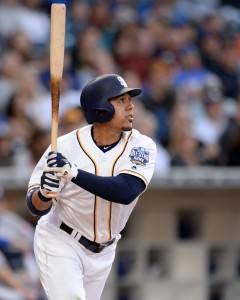4:05pm: The Rangers are also interested in trading for Cubs outfielder Jorge Soler, MLB.com’s T.R. Sullivan reports (via Twitter). Soler has become something of a forgotten man in a crowded Cubs outfield, though he is still just 24 and under contract through 2020.
3:22pm: The Rangers are showing some interest in Mark Trumbo, tweets Yahoo’s Jeff Passan, but it’s not clear exactly how strong the interest is. Texas is looking for a right-handed bat, though, he notes. Evan Grant of the Dallas Morning News, meanwhile, tweets that he believes Carlos Gomez is the Rangers’ “preferred plug-and-play” option in center field, but the length of the contract he’s seeking plays a role in the team’s interest. Per Grant, the matter may come down to whether Gomez is willing to take a two-year deal right now or if he wants to seek a three-year deal elsewhere (and perhaps see if Texas is willing to match that offer, if he does find it).
Trumbo’s asking price is reportedly considerably steeper than the Gomez price implied by Grant, as Trumbo is said to have countered an offer of $52-55MM over four years from the Orioles with a $75-80MM asking price. The Orioles balked at that lofty ask and, according to ESPN’s Buster Olney, are prepared to move on from Trumbo and pursue other options. It’s tough to envision the Rangers (or any club), topping $70MM for Trumbo this offseason.
It seems clear that Texas GM Jon Daniels and his staff are looking around at right-handed bats, as they’ve also been connected to Andrew McCutchen in trade talks. However, it doesn’t appear that they’re 100 percent closed off to signing a left-handed hitter, as Grant tweeted this morning that they’ve maintained contact with Mitch Moreland. However, things will only work with Moreland if he’s willing to wait around for a bit while the Rangers explore some other priorities.

